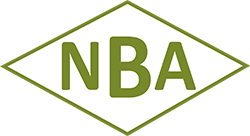Press Release - Best financial performers in beef sector are not heaviest spenders
3rd December 2008
Region: National
Best financial performers in beef sector are not heaviest spenders.
Forward thinking beef farmers have agreed that long term business survival can only be achieved through greater production efficiency coupled with a rise in earnings from the market.
This has been shown by financial results published by levy funded organisations for 2007-2008 which highlight significant improvements in business performance since coupled subsidies were removed almost four years ago.
However, says the National Beef Association, it is clear there is still much to concentrate on before the average beef business is able to cover all its costs without using SFP, which will not be available after 2012, as a top up.
“It is impossible to ignore the message given by average, cross the board losses, in the region of £250-£400 per head from all types of breeders and finishers after the costs of family labour, the rental value of owned land, and interest on working capital have all been taken into account,” explained NBA director, Kim Haywood.
“Quite obviously further rises in market income through higher payments for finished cattle are fundamental to the survival of beef production in the UK at current levels and there are hopeful signs that these will come.”
“But a number of common management factors have emerged among the businesses which lie among the top third performers in the survey samples and if these are adopted by others it would raise their survival prospects too.”
According to the surveys, farmers who match careful management of both fixed and variable costs, with the ability to raise cow or feeding cattle output are most likely to secure the best financial position.
“The finishers who lose the least money, buy better bred cattle and feed them carefully so they put on more weight over a shorter period at less cost,” said Ms Haywood.
“And another common factor among the best performers is that they have not only balanced higher cattle numbers against lower labour requirements but rely more on a family work force which allows them, on the basis of a labour charge of £12-£13 an hour, to carry more stock than the average business but pay out less to manage each animal too.”
“The benefits of carefully costing the use of fertiliser, concentrates, forage, bedding and the vet, in simple management systems, stand out too. The best performers are definitely not the heaviest spenders.”
The biggest cost burden to profit margins is the fixed costs applied to each production system. Farmers will really have to think about the type and size of machinery needed for the enterprise and whether the use of contractors at key times of the year is more cost effective than having a machine on the farm on a permanent basis. Bigger may not be the best, because of fuel costs.
“However there is still room for huge improvements. Breeding herds in the top third had 15-19 weeks calving periods when the target should be 8-10 weeks and even then anything between 8.5 and 9.5 per cent of cows were a direct drain on the business because they were barren.”
“Every one should be aiming to take a calf of each cow every 12 months and cows that cannot do this should be culled,” Ms Haywood added.
For more information contact:
Kim Haywood, NBA director. Tel. 0131 336 1754/07967 698936

